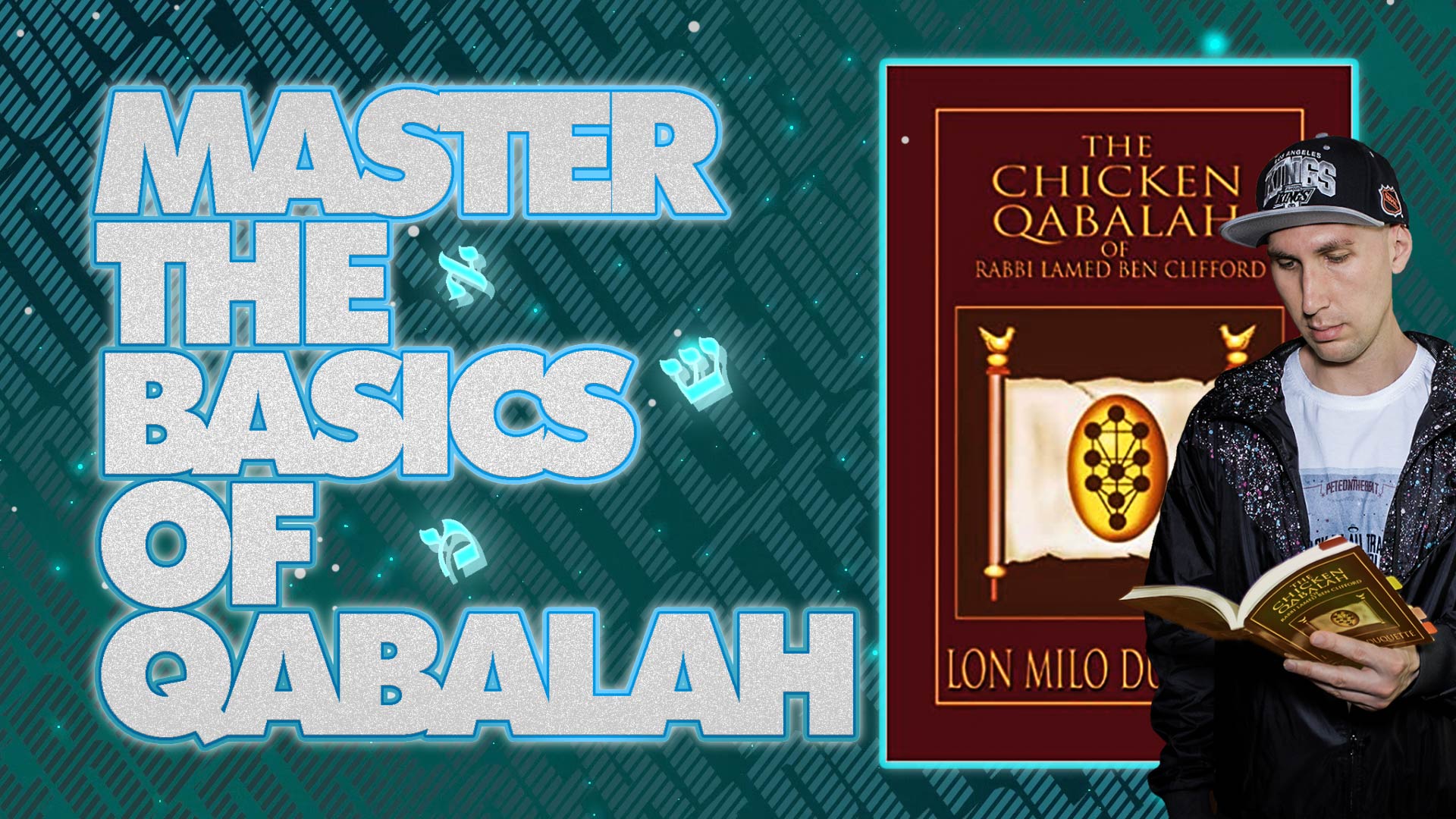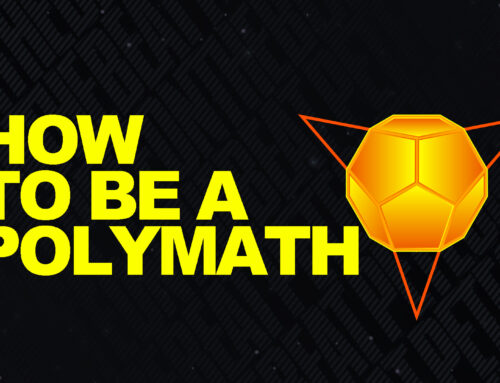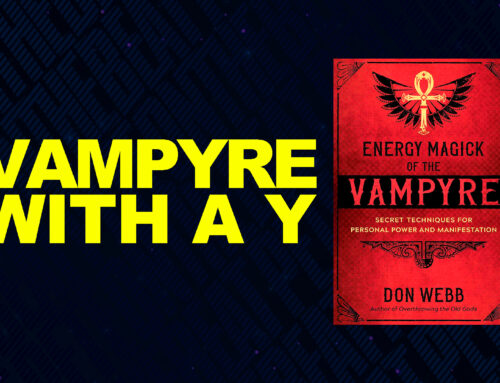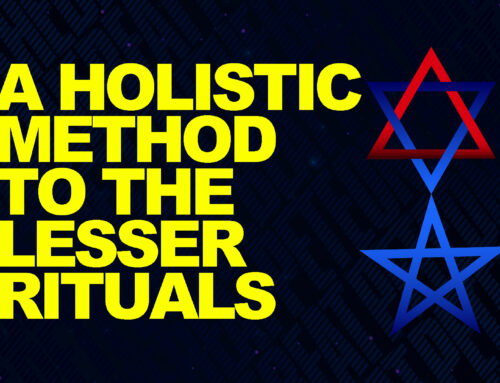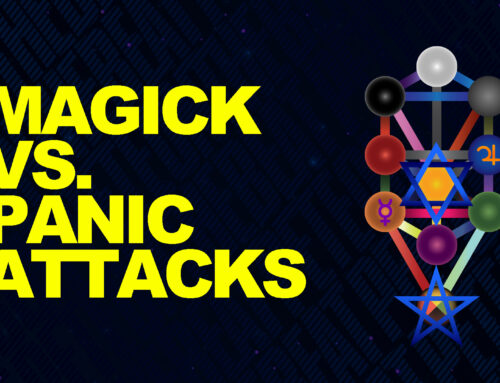Many books claim to be great for beginners when it comes to Hermetic Qabalah. While some deliver on that promise and others are way too complex, there’s one to really stand out. Called The Chicken Qabalah of Rabbi Lamed Ben Clifford and written by none other than Lon Milo DuQuette, the book can be safely regarded as the best tool for mastering Qabalah’s basics. For this reason, after getting so much out of it, I decided to review it. So, let me summarize its chapters and comment on my favorite wisdom gems.
Introduction Confession
Before getting into its first chapter, the book tells the little story of its creation. The author discovers that he can convey Qabalah’s wisdom more efficiently by linking it to various amusing stories and anecdotes. He finds that when presented in this manner, knowledge is far more absorbable and retainable.
Distancing from the “Qabalistic Golden Ages silliness,” DuQuette invents the fictitious Rabbi Lamed Ben Clifford. He also becomes that character critic and biographer.
After explaining the scope of the Rabbi’s teachings, the book proceeds with some FAQs. Also depicting the hilarious situation accidentally birthing the title, this part answers questions like whether being a chicken qabalist is difficult and what you have to believe in to become one.
Okay! But what is Chicken Qabalah?
“Chicken Qabalah is the deceptively self-effacing term given to those aspects of Holy Herbrew Qabalah that are of practical value to the practitioners of the Western Spiritual Tradition…”
P.7
Assuring that anyone is free to become a Chicken Qabalist, LMD explains how believing in this or that Deity has little to no importance. Moreover, he affirms that all this becomes irrelevant once the Qabalistic thought enters your mind. Also clarified is that being Jewish or knowing Hebrew isn’t a must. Essential is only the familiarity with the Hebrew alphabet, its numerical correspondences, and the specific power words utilized in different exercises.
Proceeding further, the same sections provide a great dose of relief regarding the proper Hebrew pronunciation.
“Won’t I be intimidated by serious Jewish Qabalists and others who speak Hebrew?”
“Hell no! You’re a Chicken Qabalist! Don’t worry about it. The first liberating secret Chicken Qabalists learn is that (as far as the Qabalah is concerned) there’s no such thing as correct Hebrew pronunciation…”
P.10
Clarifying that while specific modern Hebrew tongues might have the “correct pronunciation,” no one really knows this when it comes to ancient Hebrew. This reminds me that very similar statements are also commonly regarded to the invented-by-Jon-Dee-in-the-medieval-ages Enochian language. As many already know, and just like Hebrew, the same is also considered an angelic language, which no one really knows how exactly to pronounce.
Due to this, the Rabbi gives his first couple of valuable tips. Those being to never correct other qabalists’ pronunciation and ideally avoid such people altogether.
Found in the same paragraphs is also the crucial truth that bible’s qabalistic texts were never intended for the general public. Instead, they were written by qabalists for qabalists.
The 10 Command-Rants
Next on the menu, the reader gets a really special segment of the book: The Rabbi’s 10 Command-Rants and the author’s commentaries on them. This begins with examining the concept that everything is part of One all-encompassing something, which is mostly Nothing with infinite potentiality. Indeed, here we learn that nothingness is the ultimate force and the far better reality behind all we can perceive or, as LMD likes to say… wrap our meat brains around.
As shared a bit later, grasping this very idea was pivotal for the author and his Qabalistic studies…
“The first thing that attracted me to the Qabalah as a young Chicken Qabalist (hatchling) was the concept that everything produced out of this “Nothing.” That made Nothing the ultimate creator, not the Elohim, or Jehova, or any other of the ill-tempered bullies of the Old Testament. I like the idea of brooding and inscrutable Nothing behind everything in the universe…”
P.18
Using this to segue into the Three Veils of Negative Existence, the author also warns that it’s okay if not comprehending any of it initially. Actually, the Chicken Qabalists strive for something a bit different.
“Don’t worry if none of this makes any sense to you right now. It is enough to remember that realization of “One” is the second-to-last goal of all Qabalists. The final goal is to attain the consciousness of “Nothing…”
P.19
Following the previous, command-rants 3 and 4 elaborate on the maxim that there isn’t time and space creation, nor Heaven or Earth. Or at least not it the way they are commonly perceived. Instead, they aren’t real but mere illusions of the underlying principle of which is Nothing.
So… Is there anything real?
Fortunately, there is, and that’s yourself. However, it’s important to clarify that the author doesn’t mean your meat machine body, brain, or even mind. Instead, he refers to the actual authentic self: the universal consciousness and your bornless, undying part
The fourth command-rand reveals that our entire way of perception is pretty screwed/defected, making us “sleep walkers scumbling blind.” While saying that this is because our egos and personas likely “comes” to mind first, I think it could be said that the author equally regards the defined-by-Georgieff as Kundabuffer.
“It’s perfectly natural for you to ask, “Why is there evil in the world?” or Why do bad things happen to good people?” But stop flattering yourself. You’re never going to find an answer to those questions by gathering information with your sense and attempting to process that information with your brain…”
P. 21
Now, even that this may sound discouraging, the hope comes with the fifth Command-Rant. The same states that though unrepairable, the defect can be overcome through Qabalistic study and thought. Nevertheless, this overcoming really isn’t for most people. Not for anything else, but because the vast majority would be far better off dreaming the life-long illusion. I believe this could be regarded as identical to deciding whether to stay in the Matrix in the cult cyberpunk movie.
Overcoming our defective perception (proceeds command-rand 6) is achieved by abusing the crap out of it. This means becoming crazier than the average Jane/Joe and surrendering to the transcendent consciousness. Though quite challenging, this is precisely what Qabalistic study and thought are designed for.
The 7th command-rant elaborates on the notion that everything is connected. Applying to both Heaven and Earth, this communicates that everything is part of one giant whole, or as said in the book…
“We are living in a wall-to-wall Universe. Everything is connected with everything else…”
P.22
Explaining Hermes Trismegistus rule of As Above So Below, command-rants 8 and 9 state that: “Everything in Heaven and Earth is the reflection of everything else in Heaven and Earth…” Meaning that we also live in a mirror universe, established on repeating patterns. Beginning with electrons orbiting the atomic nucleus, this extends to planets, stars, and even whole galaxies.
“We are living in a wall-to-wall Universe. Everything is connected with everything else…”
P.22
Elaborating on the previous, this ninth command-rant teaches that everything contains an exact blueprint of what it reflects. As exemplified in the book, this phenomenon can be observed in the flora, fauna, and course, the DNA.
“Everything in Heaven and Earth contains the pattern of everything in Heaven and Earth…”
P.23
Finally, the list of command-rants concludes with the number 10. The same happens to be something many will recognize from the author’s lectures and podcasts…
“Look hard enough at anything, and you will eventually see everything…”
P.24
Likely the One to meditate on the most, command-rant 10 prescribes that only after achieving this difficult task, the Chicken Qabalist can get his/her well-deserved rest.
Sepher Yetzirah
Introducing one of the most sacred Qabalistic Texts, this chapter explains why the same is perfectly suitable for the lazy and pretentious. This isn’t just because of its short length and intelligibility. More important, it’s because it communicates two concepts fundamental to Qabalistic wisdom. Those being the 10 Holy Sephiroth diagram and the way Deity created the universe.
After this, the author analyzes segments of this ancient text. One of those is the Deity’s Nature and how (unlike what’s expected) not YHVH/Jehova but Elohim created the universe.
Having a particular meaning, Еlohim has two translations. The first is “Gods and Goddesses;” The second, “Dual-Gendered Deity.”
Also discussed in the same section is something which the New Thought fans would likely be happy to learn. Namely that according to the Sepher Yetzirah, Elohim creates everything by speaking things into existence. Аfter covering this, LMD segues into the Hebrew alphabet and its basics.
Preparing for the included tables of correspondences, these pages unfold that the Hebrew letters are, in fact, concepts representing the foundation of everything. They’re also the 22 paths connecting the spheres on the tree of life.
The Hebrew Alphabet
Reminding the importance of learning the Hebrew alphabet, chapter 4 advises obtaining several reference books, including Crowley’s 777. Then it delves into the fascinating subject of the Greek letter or number ratio Phi, which actually corresponds to the Hebrew letter Yod (י). Holding the cosmos’ basic structure, the last is unfolded in all things growing and living. For this, as a master mason, the author regards it as the Great Architect’s signature sign.
Next, these paragraphs brilliantly address Western Society’s crippling perception that: (A) The Divine is something external outside of us as humans, And (B) that we are separated from Nature.
Considering the language of GOD, Duquette provides what’s likely is the most memorable table of simple correspondences to each Hebrew letter. So, now you not only don’t have an excuse for not remembering them but can readily create an Anki or Quizlet deck and study wherever you go. The last is a pro tip given by the reviewer.
The Ineffable Name of GOD and the Ark of the Covenant
Bringing some clearance to the tetragrammaton YHVH and how “there really is no end to its possible proper pronounciations,” these paragraphs proceed with a story about a traditional ceremony. Besides hilarious, the same includes details any Chicken Qabalist would love to learn.
The 4 Qabalistic Worlds
Beginning with the encouraging “Let’s learn Chicken Qabala,” this chapter takes us through a couple of Qabalistic Documentary scripts. Written by the-Rabbi-himself, those present two crucial concepts in a very humorous manner.
Dealing with the 4 Qabalistic Worlds, the first conveys a wisdom gem, I believe аnyone can find helpful to meditate on:
“The more we divide the Great One, the more knowledge and understanding we uncover from the individual parts. But, at the same time, we drift farther from the abstract perfection of the One…”
P.82
Revealing the mechanisms behind the whole process of inception of any invention or product, this part offers a coherent and fun explication of this rather puzzling matter. Explaining the 4-staged order of creation, the same section also teaches that…
“What looks like degenerating energy from the Deity’s point of view, looks like creation itself to us pitiful creatures rooting around down on the first floor…”
P.90
“You might think that, from the Deity’s point of view, this creative process appears to be a depressing degeneration of energy and power. But I don’t think that is the case…”
P.93
“Remember the Third Command-Rant — There really isn’t creation, time or space, Heaven or Earth — because the ultimate reality resides not in Assiah…”
P.93
Next to telling that humans are made in Deity’s image, the second documentary discusses correspondences between the parts of the souls and the Qabalistic Worlds. It also notes that our ultimate selves really don’t need thinking to sustain consciousness. In fact, that is a lie told us by the Ego or Ruach, in Qabalistic terms.
“Even if you could no longer “think,” there still would be “you,” and there still would be consciousness. The Ruach part of your soul, however, is incapable of grasping that subtle fact. It is unable to transcend itself to imagine self without thinking…”
P.99
Мaking a distinction between Ruach and Neshamah, the higher consciousness, the seat of our Transcendent Awareness and the Self in Jungian terms, the author answers another question baffling many messing with this kind of stuff.
“Are angels, demons, spirits, and other magical phenomena objective or subjective realities? Do they exist outside of us, or are they just in our heads?”
P.99
The answer is that they are all in one’s head. Yet, it’s just that one doesn’t know “how big their head is — An answer which is actually the title of another of LMD books: Low Magick: It’s All In Your Head … You Just Have No Idea How Big Your Head Is.
Proceeding to the 2nd script’s final scene, the chapter debates Neshama’s infiniteness and connection with forces beyond Ruach’s comprehension. Most mysterious, this part also explains that the Chiah is оne’s true identity and the lifeforce itself. Then it wraps up with a memorable diagram to use for both the 4 worlds and the parts of your soul.
Recognizing the given-in-the-same-section example of the mother’s intuition, I can’t skip mentioning that a version of one of those scripts can be found on YouTube. The video is titled: Qabalah for the Rest of Us – Lon Milo Duquette full-length HQ. So, I suggest checking it out.
The Tree of Life
After its little introduction, this chapter continues with its first portion. Called Sacred Numbers And The Creation Of The Tree Of Life, the same proceeds with several “award-winning” essays written by ZIPY (Zerubbabel Institute of Philosophical Youth) students.
Although fictitious in the book, ZIPY or OHO (Our Holy Order) does exist as a three-stage initiatory system. It is invented by the author, and you can learn more about this by visiting his social media pages.
Discussing the fundamental role our thumbs played and continue to play for the development of our race, essay #1 elaborates on the maxim that humans are created in the image of Elohim. While more about our thumbs’ role can be found in 777, where Crowley likens it to the Spirit element, the essay also touches on the significance of the Hebrew letter Yod representing the number 10.
Agreeing with some of the points made by the previous regarding our thumbs and the creative process, the second essay handles two subjects. The first is the human’s ability to speak. The second, how parts of our anatomy are actually displayed in the Hebrew alphabet.
Dealing with Deity’s self-realization, essay 3 reveals how the One’s “Inscrutable Divine Unity” eventually becomes Three, forming what’s called the Supernal Triad on the Tree diagram.
Further tracking this process, essay 4 explains how self-consciousness isn’t the final but merely the first stage. Once occurred, that establishes momentum, triggering the creation of 2 more triads mirroring the topmost.
The same essay deals with the tree’s structure, some of the symbolism of its pillars, and the order of its three triads. Lastly, essay 4 concludes by hinting that there’s a connection between the tree’s 22 paths and the same number of Hebrew letters.
Qabalistic Magick and the Tree of Life
Something to likely feel is that everything previously written more or less preps for this and the last chapters. One of my favorites, this starts with wholehearted encouragement to work with spirits. Its first section answers the most critical questions regarding the matter. It does that with an excerpt from a letter concerning Goetic spirits evocation. Fitting in 3 pages, these are several questions (I believe) many practitioners happen to consider somewhat regularly.
“Are spirits good or evil?”
“Yes, the spirits are good or evil in the same way, electricity is both good and evil depending upon how it is directed…”
“Are spirits real or just imaginary?”
“The spirits are both real and imaginary, but most of us do not realize how real our imagination is.”
“Can spirits hurt me?”
“Yes, most definitely, spirits can hurt you. They
hurt you all of the time.”
“Why on Earth would anyone want to have anything to do with such awful and terrible entities?”
“Because, until you master these spiritual forces and consciously redirect their unimaginable power to more constructive projects, their wild energies will continue to gush like burning Drano through your soul—along every avenue of least resistance, large or small…”
“Gods, archangels, angels, spirits, intelligences, and demons are personifications of all our abilities and potential abilities—a wondrous hierarchy of consciousness that represents the subdivisions of our own soul…”
P.130-134
Being a tech-head wannabe with a lifestyle influenced by the biohacking culture, I interpret this in the following manner. That’s seeing our souls as the baddest, most powerful computers. Mighty as they are, these computers have programs and apps for anything and everything.
That said, it’s up to us to become familiar with and utilize those apps properly. The less we do that, the more they malfunction, causing issues/messing up our lives. But, on the other hand, the more we achieve it, the more we actualize our full potential…
Chicken Tarot and the Tree of Life
Debating the Three Veils of Negative Existence, these paragraphs continue by clarifying the holy sephiroth’s function as levels of consciousness and the divine order of the 4 Qabalistic Worlds. More importantly, thе section addresses, Tarot’s significance in the Western Spiritual Tradition and how learning it appears the fastest way to understanding Qabalah.
“AT: Let’s start by asking why an authority on the Hebrew Qabalah such as yourself would be interested in Tarot cards?”
“LBC: Because working with the Tarot is the fastest way I know of learning Qabalistic fundamentals and one of the most practical things one can do with Qabalah…”
“Whether we realize it or not, when we work with the Tarot, we are working with the Qabalah. “Tarot’s like the DNA of the Qabalah—better than that—it’s actually the “picture-book” of the Qabalah…”
P.151
Discussing how technically, The Fool contains all cards, the author shows the best grouping of your deck. Already known to most of us, that’s dividing them on Major and Minor arcana. He also definitely points the connection between the 22 Trumps and the 22 Hebrew letters. And then dives into the simple correspondences between letters, cards, the elements, the planets of the ancients, and the zodiacal signs.
While the planetary Trumps represent metals and body parts and the zodiacal ascribe to times of the year, plants, animals, stones, etc., the elemental symbolize the mechanisms holding the entire universe.
Why is this so important? And what it has to do with practicality—you may ask…
Well, quite a lot, actually. The more of these meanings and correspondences your mind readily operates with, the more information you get whenever doing a spread. Plus, as written elsewhere in the book, studying this knowledge will turn you into a more attractive and well-rounded person in such a unique manner.
In this section, we also find that while slicing the fool card on 22 gives the Trumps, by dividing it into 4, we get the 4 aces inside of which we find 4 court and 9 small cards.
Wonder why there are 4 aces and four suits in the Tarot?
Well, the answer comes straight out the most fundamental doctrine in Hebrew mysticism. That’s the four-letter god name YOD HEH VAU HEH, or the Tetragrammaton.
In Qabalah, the absolute Deity is too abstract to think about. Due to this, the ancients came up with the idea of “chopping it” into pieces and meditating on them.4 in number, the pieces represent the 4 worlds or realms of existence that are layers or frequencies of divine consciousness. Those are the Archetypal (Atziluth), Creative (B’rya), Formative (Yetzirah), and Assiah (Material). You can think of them as Deity’s Will, Heart, Mind, and Flesh.
What happens when you divide the 56 Lesser Arcana into four stacks, one for Wands, Cups, Swords, and Pentacles or Disks, is that you get a fourfold universe laid in front of you.
Besides the Tetragrammaton and Deity’s parts, this also corresponds to the divisions of your soul, each representing a particular element. Along with noting this, the book elegantly addresses one of the very first things any practitioner should learn and begin living with. Namely, that the Elements encompass infinitely more than their physical representations.
For instance, besides combustion and flame, the Fire element also represents aggression, initiative, passion, sex, and… as written in the book Tabasco sauce. Meaning that besides their expression in the material world, the Elements are sets of laws, characteristics, and principles omnipresent in the universe.
Guided by the 5th element, Spirit representing both lesser and greater arcana, combinations of thоse elements operate behind everything you see and imagine.
“Spirit enables the elements to stick together the same way atoms bond together from molecules. Аt the same time, this magical element Spirit serves to separate the individual elements just enough so that each tiny unit of Fire, Water, Air, and Earth maintains its elemental identity. If Spirit didn’t exist, the four elements would just smash together, turning the universe into mush…”
P.162
After providing what I feel is the best explication of Tarot’s elemental, zodiacal, and planetary hierarchy and why the Princesses and Earth are treated differently from the other court cards—which btw you can also learn from a Youtube video titled: The Thoth Tarot Lon Millo Duquette)—the book transitions immaculately to what’s likely is the most crucial thing in any practitioner’s path: The union with the HGA.
Although much of that is said in various books, LMD’s practical instructions once more stand out.
“AT: How do we achieve union with our Holy Guardian Angel?”
“LBC: You do it by falling head-over-heels in love with love. You do it by using your imagination to create a Deity in the image of your most ideal lover and then surrendering completely and unconditionally…”
P.172
Somewhat similar to the devotional practice outlined in Regardie’s The One Year Manual, this section unfolds that there are absolutely no limitations to the symbol/object of your devotion. Everything and anything could be perfectly suitable to be the focus of your love for the Angel.
Based on personal experience, I dare to add that having a muse certainly has an edge. The same you can perceive as an instrument through which your Angel communicates to you. While this is something you can learn more about from Living Thelema’s segment on the HGA, here I’ll make another suggestion mainly to the otakus, weebs, and other anime connoisseurs.
That’s to dig deep into their minds and preferences and create an “ideal combination” of their biggest waifus or husbandos.
Besides more about the HGA, this chapter ends with several tree diagrams and further explications about the court cards’ places.
Games Qabalists Play
Adding more understanding to the 10 Command-Rands, and unveiling hidden messages from The book of Ezekiel, this last chapter deals with the methods of Gematria, Notariqon, and Temura. It also teaches a couple fundamental lessons.
The first is that the Divine really doesn’t speak solely via “Holy Texts.” Instead, it does that through all sorts of messages we get in our day-to-day life. The second that by learning Qabalah, we become suitable to find encoded Divine messages in everything. And more importantly, to unfold the exact meanings, we need in a particular moment.
“Right now—right where you are, God is talking to you from the pages of the Bible, the Koran, the Vedas—from the funny papers, billboards, street signs, ticket stubs, and automobile license plates…”
P.184
“The Qabalah doesn’t enable me to merely interpret what somebody else meant to say; it forces me to hear what I need to hear! Each time I make another connection on paper, I am creating a new connection in my head (or perhaps reattaching a connection that was disconnected from the heads of our ancestors vast ages ago), and I am one step nearer to the realization that everything in Heaven and Earth is connected to everything in Heaven and Earth…”
P.186
After all that, the book touches on some misinterpretations of holy names. It also points that it is the chain of thoughts an interpretation evokes to be most important. Then it provides instructions on using Magick squares and creating sigils in them.
It also shows how by employing the method of Temura and replacing letters, you can discover that everything has the potentiality to be anything else. Thank GOD I didn’t know about that when I messing with psilocybin and other psychoactive substances in my teenage years. I’d likely do them even more just to tinker with that stuff for days, possibly not leaving the house. I guess they are right when they say you need a certain level of maturity before learning the Qabalah.
Final Words
They say the great spiritual teacher is recognized by his smile. A perfect example of that, LMD shows that a spiritual experience doesn’t have to be boring. Instead, it can be joyous and great truths can be conveyed and apprehended with the aid of laughter.
To me, Chicken Qabalah is the most readily digestible introduction to Hermetic Qabalah a modern person can have. Packing tons of information you can readily apply and put into various study apps, the book helps to understand complex subjects and otherwise puzzling classics, like Regardie’s Garden of Pomegranates, Crowley’s 777, and Dion Fortune’s Mystical Qabalah.
For this, I consider it a classic and an absolute must for the modern practitioner. So, just in case you haven’t done that already, go grab your copy of the book and find exactly why it deserves all of its positive reviews on Amazon.
Thank You For Your Time!
- An Autobiography of Trauma Book Review - April 23, 2024
- Reflections on Being a Polymath - April 12, 2024
- Greater Hexagram Ritual Manual Overview - March 31, 2024


